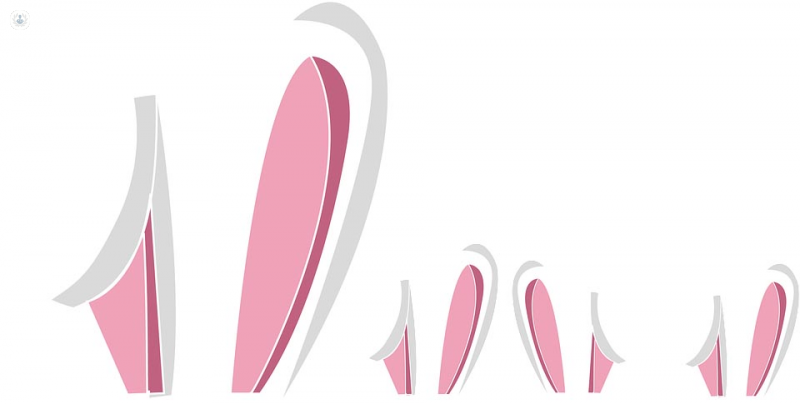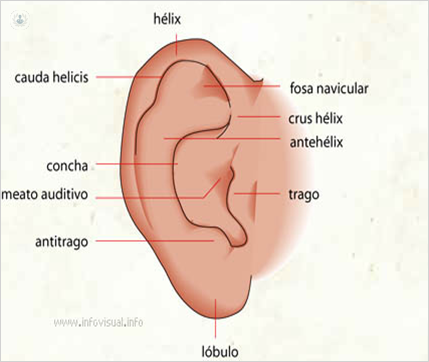Question of ears; and you, how do you have them?
Written by:With more than 35 years of experience, Dr. Rodríguez Rodríguez has a long history in the field of Plastic Surgery. He has been President-elect of the Spanish Society for Plastic Surgery and Aesthetic Surgery ( SECPRE ) and a member of the Spanish Society of Surgery of the Hand. This article explains the peculiarities of our ears, their parts and functions and what the surgery consists of to correct them.

The ear canopy , commonly called the ear, is a laminar dilatation located on the lateral parts of the head. They are between two horizontal ones, one superior to the outer edge of the eyebrow and the other inferior by the nasal wing. Its average height is 60 to 65 mm. and its width from 25 to 35 mm. Depending on the lengths, there are large, small and medium ears. The anthropologist Schwalbe divided the human race into four groups:
- Macrotia (large ears): length of the canopy> 65 mm .; Patagones and Indians of America.
- Mesotia (middle ears): length from 60 to 65 mm .; European and yellow breeds.
- Microtia (small ears): length 54 to 60 mm .; Australians and Blacks.
- Hypermicrotia (very small ears): length <54 mm; Nubians, Hottentots, Bushmen.
Parts of the ears
 The ear seat on the head is such that it forms with it an angle, the opening of which is directed towards the back, and measures on average from 20 to 30 °. On its external face, the ear presents:
The ear seat on the head is such that it forms with it an angle, the opening of which is directed towards the back, and measures on average from 20 to 30 °. On its external face, the ear presents:
- Shell: Depression that presents in the middle part and is shaped like a funnel.
- Hélix: edge of the pavilion; before helix, space between the helix and the shell; swallow, triangular eminence in front of the shell; antitrago, located in front of the drink, in the back of the shell.
- Ear lobe, in the lower part of the ear is a flaccid and soft formation.
The anatomical varieties of the ear are as numerous as frequent, as are variations in shape, and are anatomical aspects to consider in order to propose a surgical intervention.
The congenital malformation or the most frequent atrial deformity, with a frequency of 5% is prominent ears, loop, blow, valgas ... it has many denominations, most often it is bilateral, but it could also be unilateral.
Otoplasty: surgery for blowing ears
Correction is through a surgical intervention, called otoplasty , which can be an easy or very compromised intervention, since the malformation is associated with psychological disorders and emotional disorders depending on the results.
Otoplasty consists of correcting the defect of the shape of the canopy or its implantation in the skull. There are more than 50 techniques, although a retroauricular skin resection is almost always performed, leaving a scar that is imperceptible over time.
It is at this moment when the Plastic Surgeon must thoroughly inform both the patient and the family of the possibilities advantages, inconveniences and complications so that he has a real perspective of the results.
Depending on the age can be done with general anesthesia, if they are children under 5 years, or with local anesthesia and sedation if they are adults.
Sometimes the postoperative is worsening by the bandage that is made on the head, which we say resembling "the helmet of a motorcycle", and with analgesics and antibiotics.
The otoplasty is more of a repair intervention oto = ear and plastia = form, that is to say, it is to give an aesthetically accepted form, since the human auricular pavilion although it has muscles are atrophic and they are not used for the capture of the sound waves as in the animal world.


